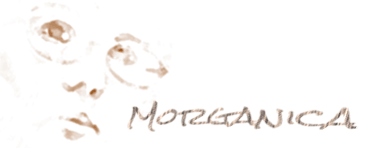Kathy Engholm here. Cynthia invited me to write a guest article about my new(ish) art show booth furniture (shown above). My first post was about the requirements I set before starting the design. In this post, I’ll discuss the key parts that allowed me to meet those requirements.
Basic structural design

Mating pieces for connecting rails to posts
After rejecting solid panels because they wouldn’t fit in my car, I decided on an open-frame concept with a foldable or rollable backdrop of some sort, to be determined later. To keep the framework stiff would need hardware to solidly lock all the connections between the upright posts (cedar 2x4s) and horizontal planks at the top and middle levels.
I considered and discarded several possibilities before remembering the perfect fastener.
Many years ago, I built a bed in an evening woodshop class and learned about bed-rail fasteners, metal parts that connect the side boards to the head and foot of the bed. Obviously, they have to lock in firmly or your bed would wobble.
I chose the style in this photo because it holds really tight (if you install it precisely) and when connected it isn’t visible from any angle.
The price for all that goodness is that these are a bear to install because they are set into the surface of the wood. It took HOURS to measure, measure again, router, drill, and chisel the proper shapes to receive these pieces.
The same fasteners connect the four vertical shelf supports to their posts.

Slots and screw heads to attach shelves
The keyhole slot
Shelf boards are attached with an amazingly cheap and easy method: slots and screw heads. A router bit called a “keyhole bit” is used to make the slots on the bottom face of the shelves.
Pan-head screws are installed on the top edge of each support, but left sticking up about 1/4″ inch so the slots with their t-shaped cross section slide right onto them. This is also an invisible fastener, with no loose hardware.
The keyhole bit is one of my best friends. It also excavated slots for mounting lights, hanging the backdrop, and attaching electrical wiring.

Keyhole slot for hanging the backdrop
The dreaded backdrop decision
The backdrop decision couldn’t be delayed forever. I like the look of matchstick bamboo roll-up blinds and tried to make that concept work, but though one of them is inexpensive enough, I needed five.
Roller shades? Not available in the right sizes.
Bamboo fencing? Too see-through.
Fabric seemed like a possibility, especially since it can be folded into small parcels. To avoid visible seams, the fabric had to be at least 48 inches wide, which pointed me to the upholstery section.

Keyhole slot to attach wiring
The glass-on-glass screen prints I would be hanging tend to be primarily white or black with a lot of detail, so my vision was a neutral earth color to make the glass stand right out. So many fabrics, so few quiet earth tones.
And the prices!
There’s cheap stuff like the near-transparent budget burlap and then there’s everything else. After a lot of shopping, a perfect fabric at the right price finally turned up. It looks a little like canvas with the classic wrinkled look of linen.

Telescoping stabilizer bar bolts diagonally across the top of the booth
Avoiding disasters
There remained one structural question: how to keep the walls of the booth from folding in or out in the wind, or if somebody leans on it?
Commercial panel systems for art show booths include a diagonal bracing bar across the top of the booth, which seemed like a straightforward choice except that it needs to be at least 8-1/2 feet long, violating the requirement to fit in my car.
My husband came to the rescue with the design for a telescoping stabilizer. He took two square aluminum tubes, one of which fits inside the other, cut them to length, drilled holes for bolting the bar ends into a couple of uprights, and added one more hole through both halves to keep the bar extended to the right length.
The next installment of this booth blog will show how to put it all together. To see where this started, check out Making a gallery-style art show booth.


Thank you for sharing, Kathy. These ideas are proof of your creativity in both art and engineering.
Jen, That’s a FANTASTIC idea I wish I had thought of. I just bought a canvas painters’ drop cloth at Miller Paint for the first time, to use as a drop cloth, and still didn’t recognize its potential. Looking at it now, it would look great as a low-cost booth backdrop. Thank you!
Thanks, Kathy. I like the use of the bedrail hardware. Did you consider canvas painters’ drop cloths for the fabric ‘walls’? They’re cheap and come in various sizes. Jen